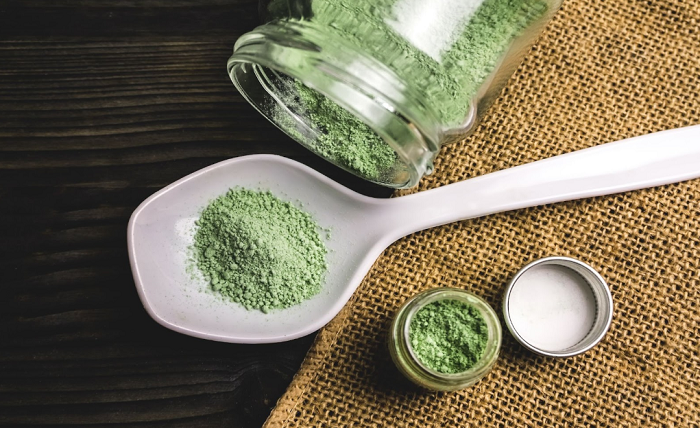In our fast-paced modern world, many individuals are turning to traditional botanical knowledge to enhance their wellness routines. Among these botanicals, kratom has emerged as a subject of significant interest. This ancient plant, used for centuries in Southeast Asian cultures, is now finding its place in contemporary wellness practices across North America. Kratom Online Canada has become a reference point for those seeking to learn more about this botanical’s potential role in holistic self-care approaches.
The Historical Context of Kratom in Traditional Wellness
Kratom (Mitragyna speciosa) has deep roots in the traditional practices of countries like Thailand, Malaysia, and Indonesia. Historically, local workers chewed fresh kratom leaves or brewed them into tea to help manage the demands of long, physically taxing workdays. The plant was integrated into social customs and folk medicine, valued for its energizing effects at low amounts and its relaxing properties at higher amounts.
This traditional knowledge wasn’t simply about physical effects—it represented a holistic approach to wellbeing that considered both body and mind. Elders in these communities understood the plant’s different varieties, optimal harvesting times, and preparation methods that maximized beneficial properties while minimizing unwanted effects.
Understanding Kratom’s Composition
Kratom’s effects stem from its complex profile of alkaloids—naturally occurring compounds that interact with various systems in the body. The two primary alkaloids, mitragynine and 7-hydroxymitragynine, are responsible for most of kratom’s noticeable effects, though the plant contains over 40 identified alkaloids in total.
Different kratom varieties contain varying alkaloid profiles, which explains the distinct effects associated with red, green, and white vein types. These differences result from factors including:
- Genetic variations within the Mitragyna speciosa species
- Growing conditions and soil composition
- Harvest timing (younger versus mature leaves)
- Post-harvest processing techniques
- Seasonal variations affecting plant chemistry
This complexity means that kratom isn’t a one-dimensional botanical but rather offers a spectrum of potential effects that can be aligned with different wellness goals.
Mindful Integration into Modern Wellness Practices
Those incorporating kratom into contemporary wellness routines often take a thoughtful, intentional approach. Rather than viewing it as a miracle solution, informed users consider kratom as one component of a comprehensive wellness strategy that might include:
- Proper nutrition and hydration
- Regular physical activity appropriate for individual needs
- Adequate sleep and stress management techniques
- Mindfulness practices like meditation or journaling
- Community connection and social support
When approached with this holistic mindset, kratom becomes part of a broader self-care framework rather than an isolated quick fix.
Creating a Personalized Approach
Individuals exploring kratom for wellness purposes often discover that personal experimentation and careful observation are essential. Factors that influence individual experiences include:
Body Composition and Metabolism
Physical characteristics like weight, metabolism speed, and even genetic factors can influence how individuals process and respond to kratom’s alkaloids. Some people naturally metabolize these compounds more quickly or slowly than others.
Current Health Status
Overall health, existing conditions, and medications can significantly affect how kratom interacts with an individual’s system. This underscores the importance of consulting healthcare providers before adding any new botanical to your routine.
Specific Wellness Goals
Different kratom varieties may align better with specific wellness objectives. For instance, some users find certain strains better suited for daytime focus, while others prefer different varieties for evening relaxation.
Personal Sensitivity
Individual sensitivity to botanicals varies widely. Some people experience pronounced effects from small amounts, while others require more to notice any change. Starting with minimal amounts and paying close attention to bodily responses represents a prudent approach.
Quality and Sourcing Considerations
Perhaps the most critical factor in safely integrating kratom into wellness routines is ensuring product quality and purity. Seeking a trusted kratom source becomes paramount when considering this botanical for personal wellness practices.
Quality-focused vendors typically provide:
- Laboratory testing for alkaloid content and potency
- Screening for contaminants like heavy metals and microbes
- Clear information about strain types and effects
- Transparent sourcing practices and relationships with growers
- Proper storage and packaging to maintain freshness
- Detailed educational resources for responsible use
These quality markers help ensure that individuals are working with pure, unadulterated products that can be incorporated into wellness routines with greater confidence.
The Importance of Community Knowledge
As kratom’s popularity grows in Western contexts, community knowledge sharing has become increasingly valuable. Online forums, educational websites, and local community groups offer spaces for exchanging experiences, best practices, and support.
This collective wisdom helps newcomers avoid common pitfalls while benefiting from the accumulated knowledge of more experienced users. Community standards often emphasize:
- Starting with small amounts and adjusting gradually
- Maintaining awareness of personal responses
- Taking regular breaks to assess effects
- Avoiding daily use patterns
- Keeping detailed journals of experiences with different varieties
Through these community connections, individuals can develop more nuanced understandings of how kratom might fit into their personal wellness approaches.
A Balanced Perspective
As with any botanical integrated into wellness routines, maintaining a balanced perspective remains essential. This means acknowledging both potential benefits and limitations, staying informed about emerging research, and remaining flexible as new information becomes available.
Responsible incorporation of kratom into modern wellness practices requires ongoing education, self-awareness, and a commitment to making informed choices. By approaching this botanical with respect for its traditional uses while applying contemporary understanding, individuals can explore its potential role in supporting their personal wellness journeys.
Whether you’re curious about kratom’s historical applications or considering how it might complement your existing self-care practices, approaching this botanical with mindfulness, quality considerations, and community support creates the foundation for a positive experience that honors both tradition and modern understanding.


